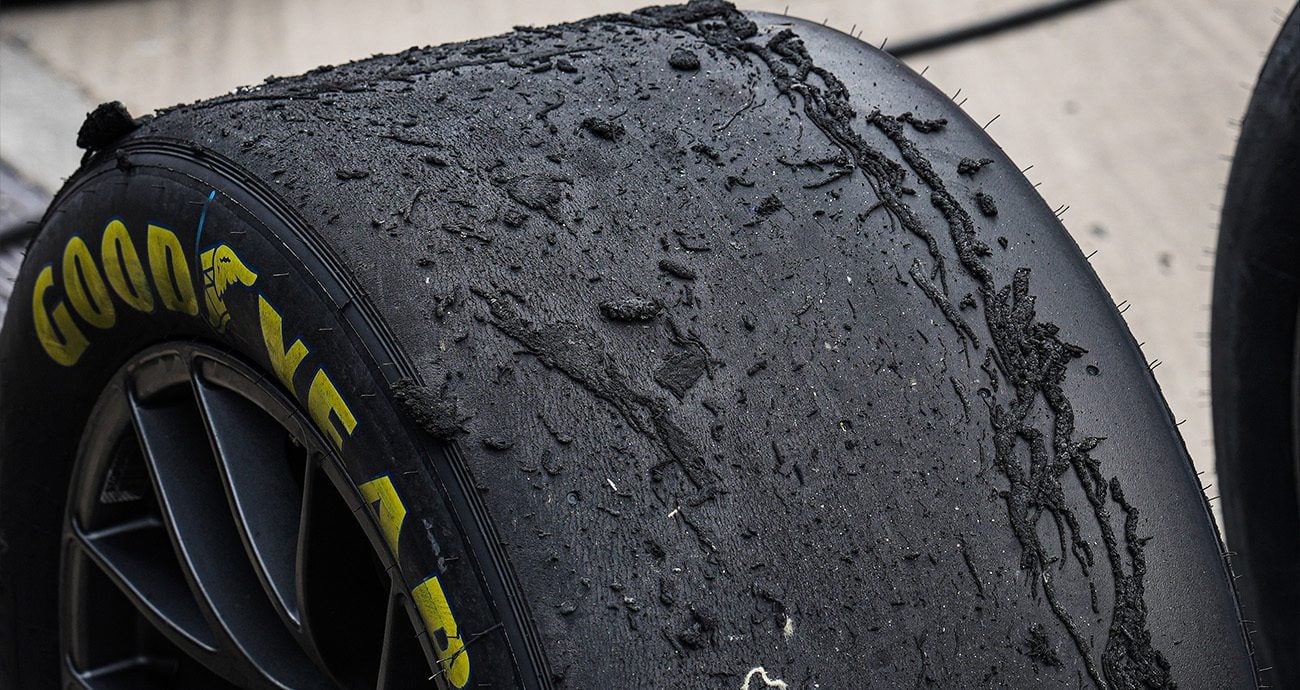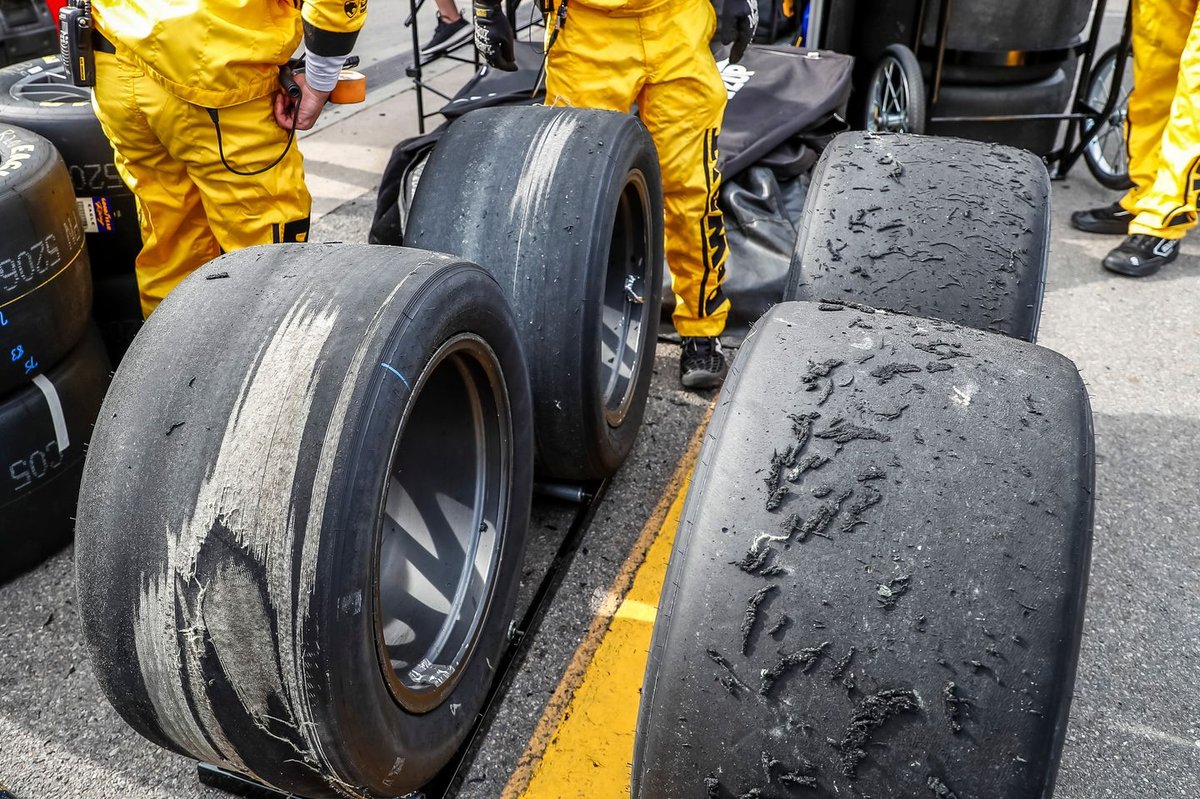Despite Goodyear bringing the same tire combination used in last September’s race at the track, it quickly became apparent during the recent event that tire degradation was causing excessive wear, disrupting the anticipated performance.
Teams encountered difficulties as they found themselves unable to push beyond 47 to 50 laps without risking tire damage that could lead to air pressure loss.
To address the issue, NASCAR permitted Goodyear to provide teams with an extra set of tires during the race. However, this adjustment significantly altered the race’s pace and pit strategies.
Greg Stucker, Goodyear’s racing director, expressed puzzlement over the track’s altered behavior compared to the previous year, despite identical conditions and equipment.
Although temperatures during Sunday’s race were only marginally different from last September, the use of traction resin instead of PJ1 in the turns marked the only known change.

Nevertheless, post-race inspection revealed minimal rubbering on the track surface, regardless of the resin application, leaving little evidence of the race’s occurrence.
The tire-related discussions during the race led to a remarkable 54 lead changes involving 16 drivers. However, tire issues also contributed to several of the nine cautions that spanned 98 laps.
Predictably, experienced drivers dominated the top spots, with Denny Hamlin clinching the win, followed by Martin Truex Jr. and Brad Keselowski.
Stucker emphasized the importance of tire wear in racing dynamics, which adds excitement by creating fluctuations in performance. However, he noted a significant deviation in the current scenario, suggesting the need for further investigation.
Stucker anticipated the necessity of conducting an additional tire test at the track before the series returns in the fall. However, NASCAR officials expressed satisfaction with the overall race experience, emphasizing its quality despite tire-related challenges.
John Probst, NASCAR’s Chief Racing Development Officer, commended the race’s quality and expressed reluctance to implement significant changes. He suggested the possibility of providing more tires to teams as a potential solution to mitigate similar issues in the future.

